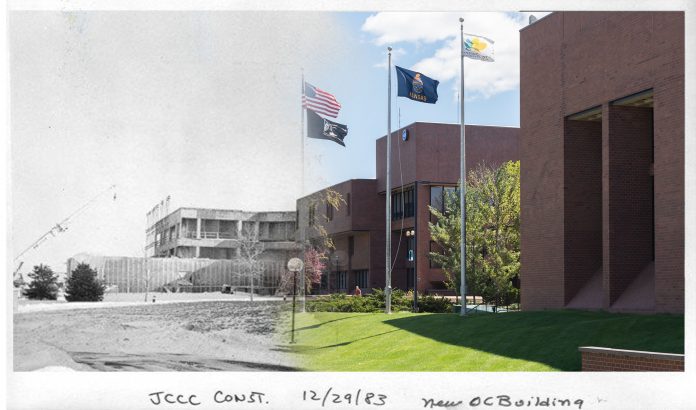Avery Gott
Staff Reporter
In the first Campus Ledger issue ever printed, we reported that faculty were voting to organize — two years later, in 1981, the Faculty Association was born.
“Where labor unions exist, whether its higher education or Railroad Workers United, workers benefits and wages are better,” Deborah Williams, former president of the Faculty association and current KNEA member said. “That is one of the effects of union organization.”
The Faculty Association, advocates for the rights of the 300 full-time faculty on campus. They negotiate a master agreement with the board that governs professors’ contracts. Without the association, the rights of many professors would be at risk, according to James Leiker, vice president, Faculty association.
“We would not have rights of academic freedom,” he said. “We want the right to behave as professionals and make professional decisions over matters which we have professional expertise.”
Academic freedom is a broad category and includes the right of the professor to assign material, pick books and choose their own unique teaching style, Leiker said.
By law, the board must negotiate certain things with the Faculty Association, such as salaries and benefits. However, some items do not have to be negotiated with the association, including the academic freedom policy that was adopted last year, which was largely decided by the administration.
“We wanted to talk about it in agreements and put it in the master agreement, but the administration did not want to do that,” Dennis Arjo, former president of the association and professor of philosophy said. “There’s the sort of place where we could have done this more collectively and had both sides agree. Instead, it was a one-sided thing the administration did.”
The American Association of University Professors has an academic freedom clause that includes the freedom of professors to discuss material in the classroom, freedom of research and freedom from censorship by their respective institutions, among other things. Williams said this clause, or a version of it, was desired by the association, but the board would not negotiate with the union.
“It wasn’t that we were going to reinvent the wheel, we just wanted to codify what already exists and get it into our contract and negotiate it as times change, but they didn’t want that,” Williams said. “It was an example of management trying to expand their rights.”
Most recently, the board and association clashed over a raise for full-time professors. Leiker said that professor salaries have not kept up with the increases in costs of living in Johnson County.
“I do not feel that they have kept up with housing and cost of living here,” he said. “Johnson County is an expensive place to live. If you’re a single working professional, like a professor at this college, good luck.”
The board is not the only institution attempting to limit the association’s ability to represent itself.
“Kansas has never been horribly friendly to unions in terms of labor law,” Arjo said. “There’s been concerns that the legislature might move to make collective bargaining impossible for public employees.”
In 2016, HB 2531 was introduced in the Kansas legislature. The bill would have limited due process rights for professors at two-year colleges and eliminate safeguards against retaliatory firing. The Faculty association rallied against the bill
“We had a really great organized effort at [the college] and it kind of radiated out beyond that at the Kansas legislature,” Williams said. “At the end of the day, we were able to stop that legislation.”
Not every school has a union like the Faculty Association. In those institutions, faculty don’t have the same rights.
“They can be terminated for all sorts of reasons,” Leiker said. “Faculty can be told which books they’re going to use, in other cases faculty have been told what grades they will assign. These are kind of nightmare scenarios we hear about from colleagues at less enlightened institutions, but those are all things that the association would oppose adamantly.”
The union also allows the faculty to vocally disagree with the board and administration, something many other types of employees cannot do, Leiker said.
“We have more rights to speak in opposition to the board when we feel the need to, that other employees don’t,” Leiker said. “We feel that’s not only a right but a duty that we have.”
Dennis Arjo agreed. “I think by and large this place functions well and the association has its place,” Arjo said. “We’re still able to sit down and talk to administration and things together.”
There will always be a natural tension between the board and the union, Williams said. But that shouldn’t get in the way of the school running as an educational institution.
“A strong union brings positive working conditions for all involved. It creates an environment where learning can occur, growth and movement forward,” Williams said. “We should all want that, and if the only mindset is that it’s a business and we need to keep costs down; some would say that’s the mindset of the current administration.”
The association will always be present at the school, advocating for the rights of professors, and, by extension, improving the quality of education students expect, Williams said.
“We have a lot of work to do together,” Williams said. “We understand the importance of cooperation and working together to further the mission of the school, which should be focused on students and student learning.”
This story was featured in our 50th Anniversary print edition.






















